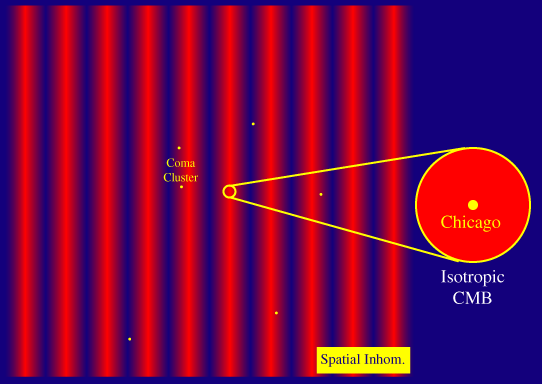
The picture of acoustic oscillations in gravitational potential wells tells us that before recombination the distribution of the temperature of the CMB varies from place to place. Furthermore there is a characteristic length scale for this variation that corresponds to the distance sound can travel. Why is it then that when we observe the CMB today we see an angular variation in the temperature on the sky?
Consider the state of the CMB right around recombination. Since the distance sound can travel is huge - on order 100 Megaparsecs (comoving) or 100,000 light years (physical), the temperature around us, the observer in Chicago, is uniform in all directions:

In this picture we are surrounded by red in every direction. It isn't until we get to tens to a hundred comoving Mpc out that the temperature varies much at all.
So why is it that we see an angular variation in the temperature today?